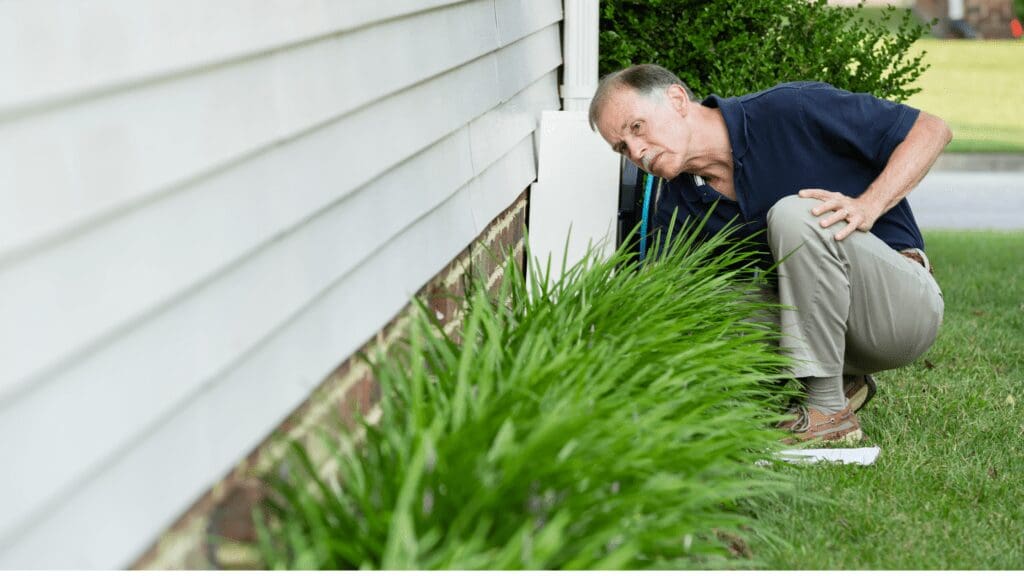Knowing the difference between foundation settlement and sinking is critically important in order to avoid extensive structural damage that could cause all sorts of problems throughout your Houston home.
As verbs, “sink” indicates a continuous movement downwards below the surface of something, while “settle” means to place something in a permanent, fixed position. As surprising as it may seem, these definitions are also valid for home foundations.
A foundation that sinks usually continues its downward movement under the ground until the problem is fixed by foundation repair experts. Also referred to as ongoing settlement, sinking can get worse over time. Therefore, a foundation that sinks should be monitored constantly until a professional identifies the root cause of the problem and comes up with the right solution for it. While it’s generally possible to solve any foundation issues, addressing problems early, preferably even before the symptomsbecome major, is often easier and more affordable.
A foundation that settles basically sinks into the ground just a few inches, and then it stops. Also known as immediate settlement ornormal settling, settlement often happens within the first few years following the construction. During the normal settling process, the foundation tends to maintain its level position across the entire structure.
When to Call In the Professionals
The signs of a sinking foundation can be very subtle at first. Thus, it’s not surprising that many homeowners go months or even years before noticing the first issues caused by their sinking foundations. In addition to the mostcommon signs that indicate ongoing settlement, there are a series of lesser-known problems that could arise from a sinking foundation. These include:
- Differential Settlement – Unlike normal settling, during which the foundation remains relatively level, differential settlement involves an uneven movement of the foundation under the home’s weight. This movement occurs when the ground underneath the home gets compressed at different rates, according to the structural loads above. However, your home’s weight is not the only factor that could cause differential settlement. For this to happen, the clay soil beneath your home should also undergo repeated expansion-contraction cycles, which could be caused by flooding, droughts, water leaks, poor drainage, improper grading, and freezing temperatures. Additionally, if there are anybedrock issues or trees with large roots planted too close to your home, you’re more likely to experience differential settlement.
- Slab Cracking – In most Houston homes, the concrete slab is hidden by floor coverings. Therefore, a crack in the slab may not be readily apparent at first. However, it will eventually affect the floor covering on top, causing different aesthetic and/or functional problems. An important consideration is that not all slab cracks signal a sinking foundation. A slab can move independently of the foundation, causing damage to the floor covering above but without affecting the foundation in any way. Therefore, floor damage could be a sign that the slab itself has settled or has detached from the foundation and lifted in some areas of your home.
- Tilting Chimneys – Achimneyleaning away or towards your home can be one of the most intimidating signs of a sinking foundation. Considering the weight of a chimney, even the slightest movement can put it at risk of tilting. Although some chimneys are built on separate footings, they may still lean if the foundation sinks.
- Damage to Upper Stories and Roofs – The foundation is one of the few elements that ensure the stability of a home. When it’s compromised, different parts of the home, including upper stories and the roof, are bound to experience some problems. For instance, if a foundation sinks and settles unevenly, cracks may appear in upper floor walls and ceilings, while the roof might start to sag, bow, or become wavy.
If you observe any of these problems or otherissues that may signal foundation movement, you should have your foundationinspected by an experienced professional as soon as possible.
How Do Professionals Repair a Sinking Foundation?
At Allied Foundation, our professionals useconcrete piers to restore and stabilize sinking foundations, even when poor supporting soil is the underlying cause of the problem. Because these piers are securely attached to the base of the foundation with steel brackets and extend through unstable soil layers down to solid bedrock, they transfer the weight of the home to more competent load-bearing soil. As a result, your foundation and slab can be lifted back to their initial position. What’s more, the piers will hold your foundation in place, so it cannot sink and shift any longer.
As a family-owned and operated business, Allied Foundation has proudly served Houston and surrounding locations since 1982. By restoring the structural integrity of foundations and homes, we provide peace of mind to homeowners and allow them to increase their homes’ value. If you have any questions about the foundation repair process, or you want to request a free foundation inspection and estimate, call us today at 281-972-3994!

